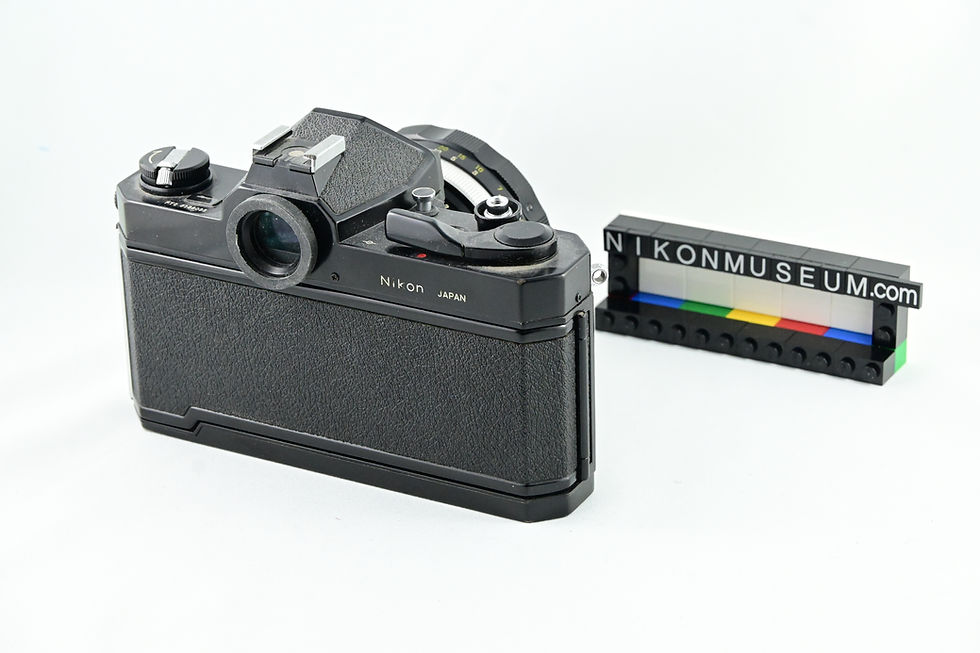Nikkormat Ftn
- hometecheasy
- Aug 25
- 3 min read
Updated: Aug 26

The Nikkormat FTn, produced from 1967 to 1975, is a legendary 35mm single-lens reflex (SLR) camera from Nippon Kogaku (the company that would become Nikon). It represents the pinnacle of the Nikkormat line—a series designed to be a more affordable, robust, and user-friendly alternative to the professional Nikon F, while still sharing its superb lens mount and optical quality.

The "Why": Nikkormat's Place in the Nikon Ecosystem
Before the FTn, there was the original Nikkormat FT (1965). Nikon needed a camera to bridge the gap between the expensive, modular, professional Nikon F and the simpler, lower-end rangefinders and SLRs from competitors like Canon and Pentax.
The Nikkormat was the answer:
Fixed Prism: Unlike the interchangeable finders of the Nikon F, it had a built-in prism.
Integrated Metering: It featured a built-in, through-the-lens (TTL) light meter, a huge convenience feature at the time.
Simplified Design: It was a complete, ready-to-shoot camera out of the box.
Shared Lens Mount: Crucially, it used the same Nikon F bayonet mount, giving users access to the entire, and already legendary, system of Nikkor lenses. This was its biggest selling point.

The Nikkormat FTn: The Evolution (1967)
The Nikkormat FTn was the direct successor to the FT, and it introduced a major improvement that defined its usability: the "Center-Weighted" light meter.
The Innovation: Earlier TTL meters, including the one in the original FT, were often "average" meters that could be easily fooled by bright backgrounds or dark subjects. The FTn's new meter concentrated 60% of its sensitivity on the central 12mm circle of the focusing screen. This "center-weighted" metering was far more intuitive and predictable, allowing photographers to point the central area at their subject, set exposure, and recompose. This design philosophy became an industry standard and is still used in cameras today.
The "Indexing" Pin: To make metering faster, the FTn introduced a new coupling system with AI-Style "rabbit ears" but with a key difference. The photographer had to perform the "Nikkormat Twist":
Mount the lens.
Rotate the aperture ring to the smallest f-stop (e.g., f/16).
Rotate it back to the largest f-stop (e.g., f/2.8). This action engaged a meter coupling pin with the lens's "prong," transferring the lens's maximum aperture information to the meter. After this one-time action per lens, the meter was correctly indexed.
Other Key Features:
Robust Construction: It was famously heavy and built like a tank, with a strong chrome-over-brass chassis.
Shutter: A reliable, mechanically controlled Copal Square vertical travel metal focal-plane shutter with speeds from 1 to 1/1000th sec plus Bulb.
Meter Display: The meter was displayed via a pointer galvanometer visible on the right side of the viewfinder. The user would adjust aperture or shutter speed until the needle was centered.
Self-Timer: A classic lever-actuated self-timer.
Film Advance: A long-throw lever (approximately 180 degrees).

Historical Context and Impact
The Photographer's Camera: The FTn was not marketed at the budget beginner or the high-end pro. It was the perfect camera for the serious amateur, advanced enthusiast, and working photojournalist who needed a rugged, reliable, and metered body without the full cost of a Nikon F. Many professionals also used it as a dependable second body.
Competition: It went head-to-head with cameras like the Canon FTQL (which also introduced a quick-loading system) and the Pentax Spotmatic. Its key advantage was the Nikon F lens system, which was widely regarded as superior.
The Name "Nikormat": Interestingly, in the Japanese domestic market, the camera was always sold as the Nikormat FTn. The "k" was dropped to make it easier to pronounce for Japanese consumers.
The Legacy and End of the Line
The Nikkormat FTn was a massive success and remains one of the most beloved classic SLRs.
Successor - The Nikon FM: The Nikkormat line effectively ended with the Nikkormat EL (1972), an aperture-priority electronic model. The final mechanical Nikkormat was the FT3 (1977), which updated the mount to the modern AI (Automatic Indexing) standard, eliminating the "twist."
The Name is Retired: Shortly after the FT3, Nikon rationalized its naming system. The role of the advanced amateur mechanical SLR was filled by the new, more compact Nikon FM (1977). The "Nikkormat" name was retired after a 12-year run.
Collectibility Today: The Nikkormat FTn is highly sought after by film photographers today because:
It offers incredible value, often found at a fraction of the cost of a comparable Nikon F.
Its build quality is exceptional and often superior to many modern entry-level cameras.
It provides a pure, mechanical shooting experience.
It grants full access to a vast universe of fantastic, affordable pre-AI Nikkor lenses.
In summary, the Nikkormat FTn is a cornerstone of Nikon's history. It democratized access to the Nikon system, introduced revolutionary metering technology, and established a design philosophy of rugged reliability that defined Nikon's reputation for decades. It is a true classic of the film era.



Comments